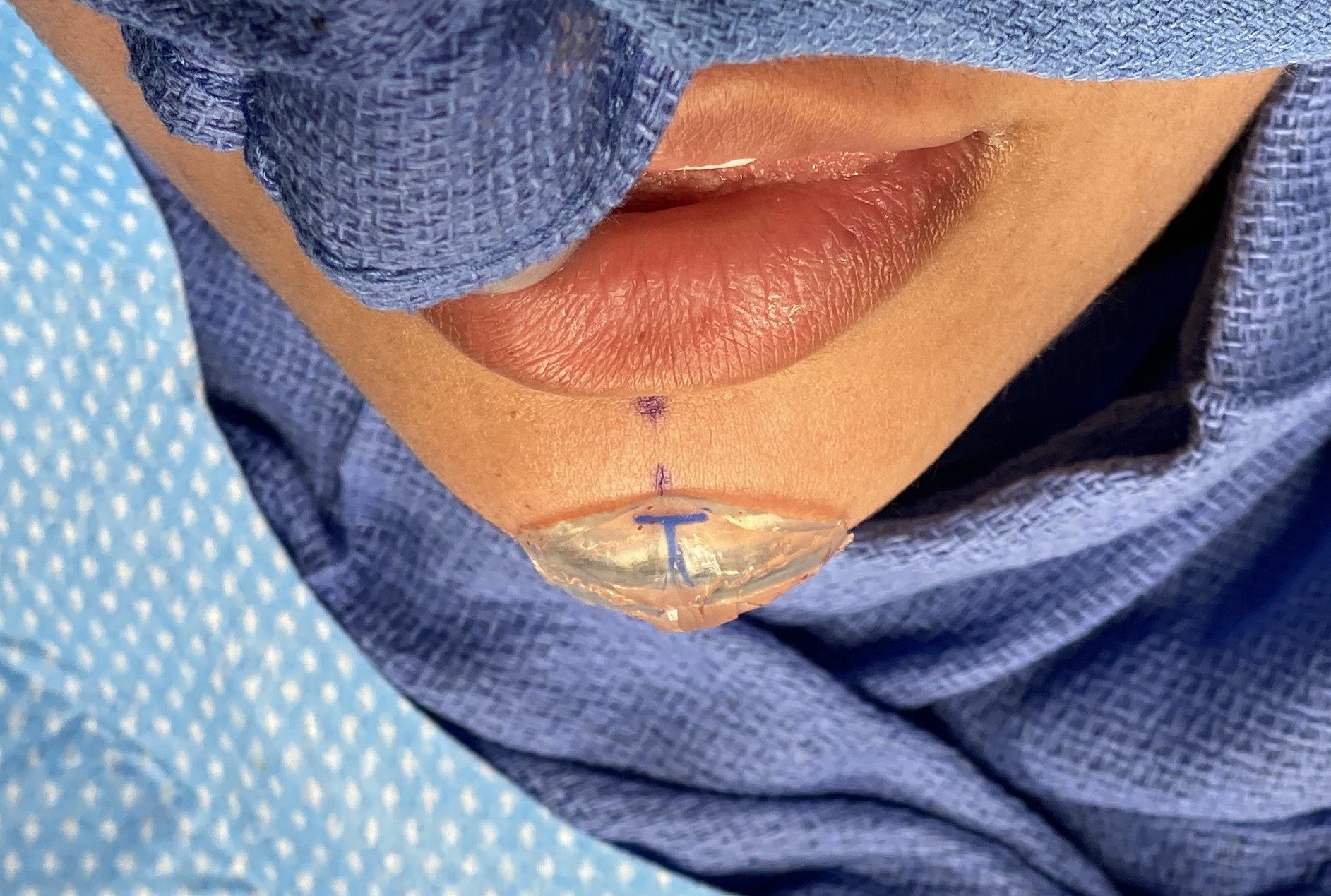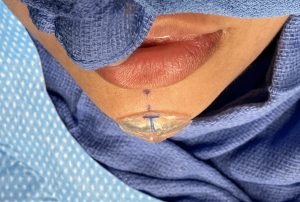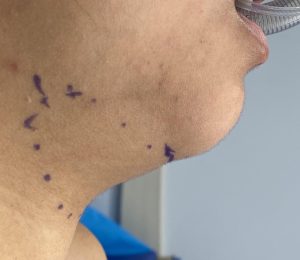Background: The soft tissue chin pad wraps over and around the bony end of the chin. Its movement is affected by a variety of muscles, most commonly the mentalis muscle which pulls the chin pad upward and protrudes the lower lip. But the movement of the chin pad can be affected by other muscles and facial movements that are not directly attached to it.
One such movement is a downward distraction of the soft tissue pad, moving its bottom edge more inferiorly below the projection of the chin bone. This is seen to occur when smiling (dynamic chin ptosis) in some patients and is the result of multiple factors. Typically a larger soft tissue chin pad often exists in the patient whose smile is more horizontal without much mouth corner lift. This has an effect on the chin of compressing the soft tissue pad against the bone which drives it inferiorly. This creates an inferior bulge in profile and can elongate the chin in the frontal view.
Interestingly dynamic chin ptosis is seen more commonly, in my experience, in borderline larger chins where a bigger soft tissue pad exists. It is far less commonly seen in short chins for the obvious reason that there is less of a bone edge on which to descend over. When it does exist in this type of patient it is often more modest in severity because the chin pad is also smaller.
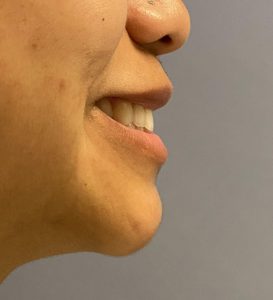
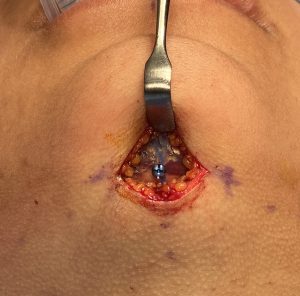

In dynamic chin ptosis associated with a smaller chin an implant may be all that is needed to support the chin pad and prevent it from moving inferiorly when smiling. A small submental excision and tuck underneath the implant can help hedge against any risk of residual dynamic ptosis occurring after surgery.
Like in all female chin implants the key is to avoid adding any width to the chin as well as creating a more tapered shape if desired from the front view. This needs to be assessed before surgery with computer imaging. Because there are no preformed standard chin implants that have this shape intraoperative modification of an off the shelf implant is needed.
Case Highlights:
1) Hyperdynamic chin ptosis is when the soft tissue chin pad pulls down when smiling, elongating the chin and creating an unaesthetic bulge below the anterior jawline.
2) Hyperdynamic chin ptosis occurs most commonly in females with normal or excessive horizontal protections.
3) In the short chin with soft tissue chin pad ptosis a supportive chin implant is the most important part of the treatment strategy.
Dr. Barry Eppley
Indianapolis, Indiana

